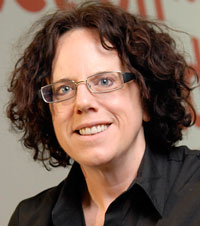In the 25 years I’ve been writing about and working closely with public services, it could not possibly be argued that they have not tried new systems and structures in the hope of improvement. Yet deep-seated problems, at individual and community level, still resist solutions. And key agents of change – service users and grassroots organisations – have actually lost voice. If you think the sole reason change hasn’t worked is the lack of money in the system, think again.
There are crimes and behaviours which corrode our communities. Deep-seated and apparently intractable, they surface in every public service setting, and often leave professionals feeling helpless.
These carry immense stigma for individuals and families. This, added to the collective inadequacy of professional and community responses, means there is no incentive to disclose, which makes earlier intervention almost impossible. So the damage continues, at huge human and financial cost. One of these is domestic abuse.
Domestic abuse is common. On average, two women a week are killed in England and Wales by a current or former partner. The police receive a call relating to it every 30 seconds. It is perpetrated within almost a third of families presenting to Troubled Families programmes. One in seven under 18s will have lived with domestic abuse at some point. The total cost of domestic abuse has been estimated as £5m each week for every local authority area in England, and the cost to the NHS of physical injuries alone is £1.7bn per year. Nearly a quarter of what the criminal justice system spends on violent crime goes on domestic abuse.
The way the system as a whole currently responds is inadequate. The main gateway to support is an assessment of “risk”, with support increasingly rationed to those victims deemed at “high risk” - and melting away when the risk is considered to have been managed. Clearly this is not early intervention, nor does it promote long term recovery, nor is it reducing domestic abuse, as evidence shows.
The problem with focusing just on risk is that a woman whose every movement has been controlled by her partner, but who has rarely or never been physically attacked, could be classified as “standard risk”. However, if she decides to leave, evidence shows that the risk could not be higher in that moment.
The obstacles to responding adequately to domestic abuse are as much cultural as structural. The only ‘systems change’ that can work is one which starts in communities. The focus needs to be on the behaviours of those who operate within the system, rather than the structures within which they operate.
Public services are waking up to the huge cost of domestic abuse, and the desperate need for agencies outside the criminal justice system to lead the way in supporting survivors to recover and regain their independence. But there is precious little money available to reinvest. Reorganising and restructuring systems is costly and disruptive in itself. The child safeguarding system does not provide a reassuring example of the impact of changing structures on the management of complex, highly secretive, highly stigmatised domestic situations.
Women’s Aid believes the only change that can work is one which puts survivors of abuse themselves at the centre. We must create communities which visibly refuse to condone abuse and in which victims can come forward in safety. Rather than reinventing the wheel, we must enable survivors and their children to access the services which already exist, and ensure that those services respond helpfully.
Avoiding a strict blueprint which has to be followed in every locality, we have worked with survivors of abuse and a wide range of services to identify a set of core elements which should be co-developed at local level between survivors and their local services. This is called Change that Lasts.
At the heart of this model is the single goal of freedom from abuse through independence – a goal shared between survivors themselves, service providers and commissioners, achieved through a focus on her individual needs and building on her existing strengths and resources. This fundamental approach underpins all elements of Change that Lasts and is facilitated through strengths-based, needs-led assessment and planning tools that are straightforward enough to be used by a range of professionals, and which apply to survivors of any gender.
The professionals and agencies with whom a survivor already has a relationship of trust are fundamental to this process. Within a range of different settings, they are already supporting survivors with issues such as substance use, mental health, parenting, advice, and can better use this opportunity to address the domestic abuse. This Trusted Professional will ensure the woman can access support where she needs it, based on the assessment and plan agreed with her, advocating for her if necessary, and refer her to specialist support if required. The assessment and planning tools and the Trusted Professional role are the first two core elements. Who is trained in these will vary from locality to locality, depending on consultation with women from all communities in the area.
Extensive consultation with survivors also informs the third core element, the Ask Me scheme, to identify “safe spaces” – which could be hairdressers, retailers, banks, schools, health centres, places of worship: they will vary for women of diverse ages, ethnicities, economic groups. Individuals working in these spaces will be trained to have a supportive conversation and provide an initial appropriate response, giving enough information about immediate options to take the next step towards safety, freedom and independence.
Ask Me makes communities safe, makes seeking help normal, and demonstrates that abuse is not accepted or condoned.
We are about to start trialling Change that Lasts on the ground. We believe it works with the ways in which individuals dealing with complex and volatile situations can seek help, not against them. It needs the commitment of all public sector commissioning agencies, but will not require them to set up new structures. Too often our response to individuals with complex needs works against the grain of their lives, depleting their own resources even further and despairing of those who “do not engage” or appear to be “not accepting help”. Specialist support for domestic abuse survivors is not costly, often consisting of counselling and group work. What is costly is the creation of complex multi-agency systems which purport to manage risk but really just enable professionals to defend their decisions if the unthinkable happens; which look like a pathway to professionals but feel like a brick wall to individuals.
It’s time for a different kind of systems change – that lasts.
Polly Neate, CEO, Women’s Aid
You can follow Polly on twitter @pollyn1
For more information on Change that Lasts visit www.womensaid.org.uk/change
Related articles
-
Did Bevan's bedpan test set the NHS on the wrong track?
Ed Cox
Ed Cox, Director of Public Services and Communities, argues that the NHS needs a more devolved approach in the decade ahead.
-
EU calls for Lateral Thinkers to Reimagine Age-inclusive Homes
Ian Spero FRSA
What does smarter age-friendly housing look like, and how can we work together collaboratively to develop these solutions? Fellow Ian Spero explores this, and outlines how you can contribute on 11 and 12 May, at a conference in London.
-
Reimagining health and wellbeing
Tom
Find out more about our new project with NHS England and download our Wellbeing guide.




Join the discussion
Comments
Please login to post a comment or reply
Don't have an account? Click here to register.
How wonderful to see a real life example of all the asset based principles that are being discussed at great length in many places but rarely translated into action. I think this is partly because professionals often feel unable to relinquish their responsibilities to others while also feeling too overwhelmed to offer the service needed.
Your observation that 'The main gateway to support is an assessment of “risk”, with support increasingly rationed to those victims deemed at “high risk”' is true of very many public services, so evidence from your pilots will be very useful.